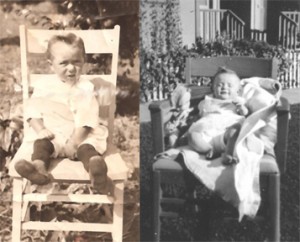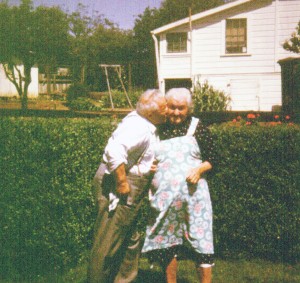Evidently it was the popular thing to sit babies in grownup chairs and take their pictures
Monthly Archives: June 2012
The Kiss
Domenico Scalcini
Nonno’s ancestors are from two Piantedo families, the Scalcini’s and the Digoncelli’s Little is known about either family and the little that is known leaves many unanswered questions that are still be researched. What we do know is both captivating and intriguing.
FAMIGLIA di SCALCINI
We know next to nothing about Nonno’s great grandparents and grandparents except that Scalcini’s were known to live in the Sondrio region of Italy, near Morbegno. On March 8, 1849 Carlo Scalcini appeared in the Opera “Giselle” at La Scala. Cesare Scalcini, from Morbegno, was a design engineer and in 1861, created the plans for a castle of wood that housed the new concert bells for the parochial church and Agostino Scalcini was a councilman of Morbegno from 1864-1887. Only more extensive research will reveal our ancestral connection.
DOMENICO LORENZO SCALCINI
Nonno’s father, Domenico Scalcini, was born in Piantedo around 1860. He was an agricultural worker. In 1888, he married Maria Ursula Digoncelli, also from the small town of Piantedo. On his wedding day, Maria gave her husband a picture of St. Domenico. The picture has been handed down through the generations and has become a family treasure.
Copy of the picture of St. Domenico given to Nonno’s father by his wife on their wedding day, 1888. Handed on to Nonno by his mother in 1952. Passed on to Paul Scalcini by Nonno in 1957. Given to Christopher Shobar, Nonno’s great grand son, by his Uncle Paul.
Domenico did not live long after his marriage. He died before the January 21, 1889, birth of his son, Domenico Lorenzo. His death presents us with a family mystery. The cause of death remains uncertain. Some accounts say he died in battle but other reports say he died from a fall from a tree. We know that he had at least one sibling, a brother Battista, who lived in Piantedo.
Gnocchi Recipe
Another favorite, especially on Friday’s, was Nonni’s gnocchi’s. She made the simple peasant style flour gnocchi’s covered in garlic butter and plenty of cheese. Below is the traditional potato gnocchi recipe and Nonni’s simple version.
Gnocchi Recipe
Potato Gnocchi (Basic Recipe) 1 lb. baking potatoes ; white flour, salt Wash 1 lb. baking potatoes and cook in lightly salted water (without peeling). When ready, drain, peel and mash them through a potato ricer, and place on a pastry board or marble surface. Add a small amount of salt and as much white flour as necessary to make the dough soft enough not to stick to your fingers. You don‘t have to knead the dough too much, just long enough blend all the ingredients. Cut a piece of the dough and, coating your hands with flour, roll the dough into a long cylinder about the thickness of your index finger. Then cut the cylinder into pieces about l-in. long. Shape into shells Repeat until all the dough is used, trying to handle the dumplings as little as possible. Finally, place the gnocchi on a flat surface sprinkled with flour without overcrowding. (Nonni usually used the peasant recipe: Flour gnocchi: Flour water salt and a little olive oil.) Drop the dumpling gently into a large pot of boiling water. (Don’t overcrowd) boil until dumplings rise to the top. Remove with a slotted spoon and place in a colander to drain.
Slice 10 gloves of garlic (or more) and brown in butter until crisp and butter has taken on a nutty brown color. Plate the gnocchi and pour on the garlic butter and gently toss. Top with an ample amount of grated parmesan cheese.



